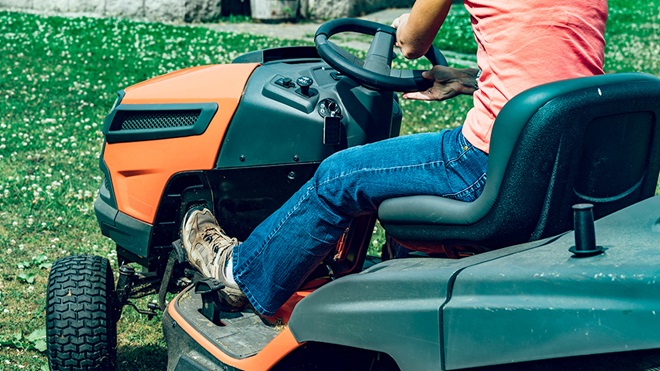Most ride-on mowers look like small tractors with a cutting deck suspended underneath, and they cut a wide swathe of grass – anywhere from 70cm to over a metre. Compare this with the 46–48cm width of the standard walk-behind rotary mower – not to mention the fun factor of zooming around the yard – and you can see how appealing a ride-on is to anyone who owns a big property.
We're on your side
For more than 60 years, we've been making a difference for Australian consumers. In that time, we've never taken ads or sponsorship.
Instead we're funded by members who value expert reviews and independent product testing.
With no self-interest behind our advice, you don't just buy smarter, you get the answers that you need.
You know without hesitation what's safe for you and your family.
And you'll never be alone when something goes wrong or a business treats you unfairly.
Learn more about CHOICE membership today
How much should I pay?
In our latest product test reviews, prices range from just over $3000 to $5999, depending on engine size, mowing width, catcher features, design and transmission type (manual or automatic).
Features to look for
Try before you buy
Hop on and get your bearings. Is the seat cushioned for comfort with a back support? Are the controls easy to use? Can the controls and any foot pedals be reached without stretching? Is the steering wheel or levers at a comfortable height and angle for you? Check how easy it is to remove, empty, and reattach the mulch-plug or catcher.
Zero Turn Mower
Ride-ons with a steering wheel are popular options, but owners of comparatively smaller lawns and those with trees or awkward-shaped garden beds should consider a zero-turn model. Zero-turn mowers have a rear-mounted engine and rear-wheel-brake steering, delivering a very tight turning circle. You'll need a bit of practise to get the feel of using lever steering controls.
There are also smaller rear-engine ride-on mowers that are not zero-turn but still have a tight turning circle. They have a steering wheel, and are often less expensive to buy.
Mowing, mulching/catching options
Mulching is an option on many models, including both side discharge and rear-catcher mowers. They can quite easily be converted to mulching mowers using a mulch-plug that holds the clippings inside the mowing deck, chopping them up more finely before blowing them into the lawn.
Side discharge works better on longer, rougher grass, and on models with wider mowing decks. For finer lawns, rear-catcher models will collect the grass as you go.
Watch the weight and watch the slope
Ride-on mowers are heavy, typically weighing in at 150kg or more. When the rider's weight is on top of the mower (particularly with tractor-style models) it raises the centre of gravity. It's not advisable to mow sideways across slopes greater than 10 degrees. Zero-turn models designed for commercial use are wider and the driver sits lower, allowing them to handle greater slopes, but still not recommended beyond slopes of 10 degrees. Anything beyond this is more safely done with a mower you can walk behind.
Drive safe
While manual transmission is a solid budget choice, an automatic/hydrostatic transmission model will allow you to speed up, slow down and reverse without changing gears. You can even get cruise control on some models, to make long mowing sessions more comfortable.
If you will have to back up, look for models that either automatically stop the blades when you select reverse or have a reverse override switch. A seat shut-off switch that stops the blades if you get off the mower is also an essential safety feature.
How big is your rig?
Use the size of the mowing area to determine the size of your mower. As a rule of thumb:
- Up to 4000m² (1 acre) of grass requires a cutting width of 110cm (42") and a 16–20HP (horse power) engine.
- 4000m² to 1 hectare needs a cutting width of around 120cm (48") and a 20–24HP engine.
- Over a hectare, get the largest cutting width possible and at least a 24HP engine.
Note: Cutting widths are typically given in inches, as imperial measurements are still dominant in the US.
Stock images: Getty, unless otherwise stated.



